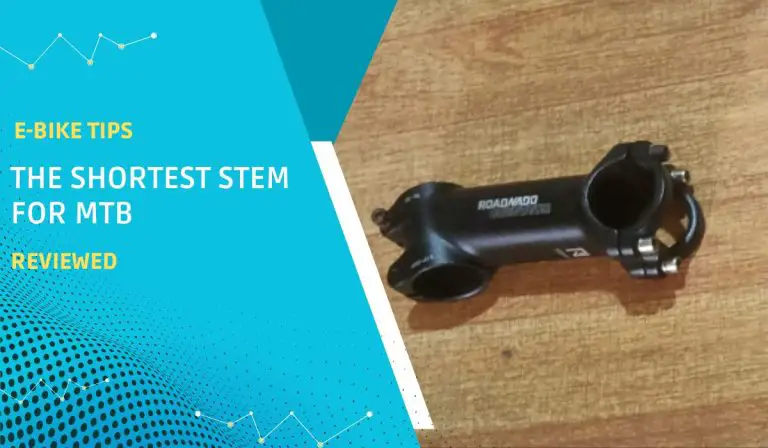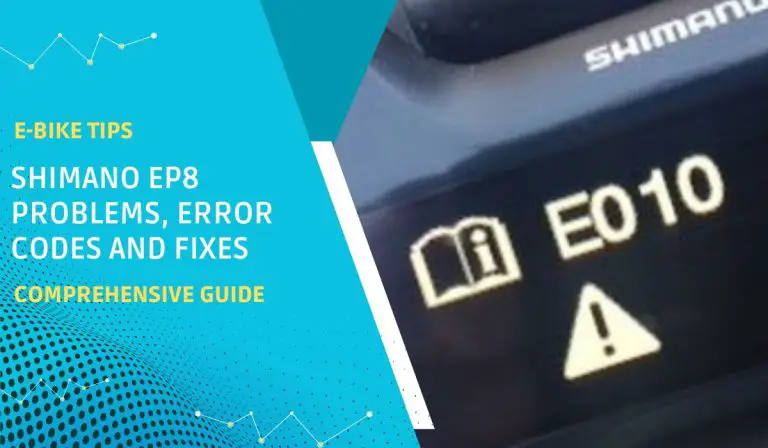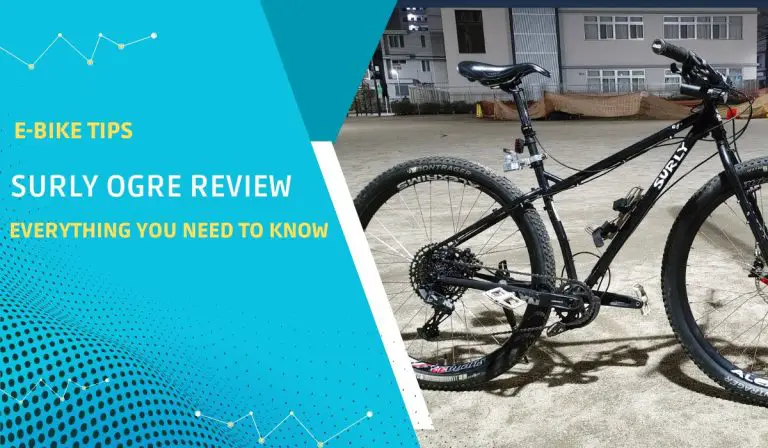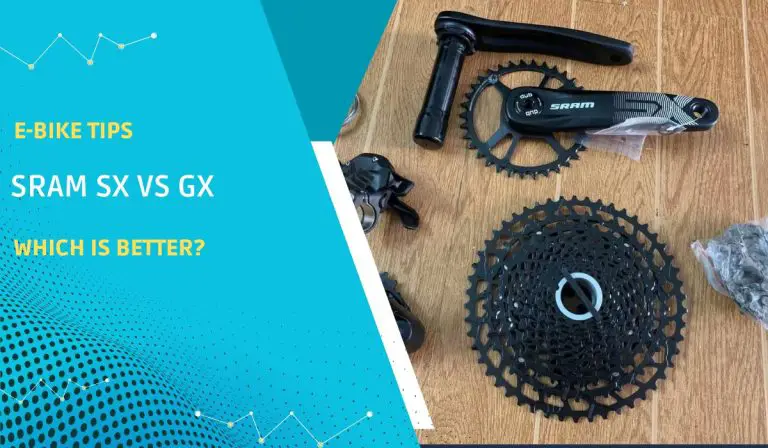The RadRover 6 Plus electric bike’s recommended tire pressure is 20 to 25 PSI (pounds per square inch) for the best performance and ride comfort. While maintaining this tire pressure will guarantee safe handling and optimal battery efficiency, you must also consider the terrain and riding conditions before inflating the e-bike tires to a specific PSI.
The remarkable thing that Rad Power has done with the Radrover 6 Plus electric bike is to make it have a fat tire for comfortable riding on paved and unpaved terrain. With a 26″ x 75mm wide wheel, the 6 Plus has minor but well-thought-out upgrades from previous models. Perhaps you’ve got the stock tires and tubes for the Rad Rover 6+, and you’re about to put them on FlatOut.
It means you’ll have to deflate and then re-inflate the tires. What exact PSI should you use to re-inflate your tires? You may see a 20 to 30 PSI range on the sidewall, but you want to know the sweet spot. Do your terrain and riding conditions influence PSI? I’ve provided answers to these questions in the rest of this article.
Skip To Section Here
The Sweet Spot For Radrover 6 Plus Tire PSI Range
The RadRover uses 6” x 4” rubber tires with inner tubes. According to the manual, you should inflate the front and rear tires of the Rad Power Bike to 20 to 25 psi. However, this won’t work for every terrain and riding situation.
For example, 20 psi can give you a smoother ride, but expect more frequent flats and less mileage from a battery charge.
I run mine at 28 psi for mostly road and well-groomed trails. I’m in a warm-weather state and do most of my riding on city streets. But when I go for off-road fun riding, I take up to 30 psi because it helps with flats (caused by pinched tubes after hitting a pothole).
However, at 30 psi, the tire doesn’t provide as much cushion. So it’s a rougher ride. For context, I’m 152 lbs, and my gear weight is 8 lbs.
The idea is that the terrain you’re driving on will ultimately determine at what PSI you should also inflate your Radrover 6 Plus tires. But the tire type also plays a determining role.
The Radrover 6+ uses Kenda Juggernaut tires that are 4 inches wide. Generally, wider tires, lighter riders, and smoother terrain require lower tire pressure. In contrast, narrow tires, heavier rider weight, and rougher terrain require more PSI.
Radrover 6+ Tire Pressure For Winter?
If you’re riding your Radrover 6 Plus e-bike in winter conditions, you’ll want slightly lower pressure than usual. I recommend you inflate it up to 15 psi and see how that feels. The idea is to give the tires enough squish to grip the ground.
During my stay in northern Sweden, I experienced the first snowfall of the season, and the roads became snowy and slightly icy. At this point, I had to think beyond Radrover-rated tires, around 25 to 30 psi.
In such weather conditions, your objective should be to lower pinch flats. You need higher pressure for the tires to withstand hitting curbs and whatnot.
You can start with 15 psi and observe how riding feels under this pressure. You can then go higher from there. There’s no straightjacket rule for this.
However, Rad Power Bike has provided a guide to help bikers determine the correct PSi for different riding conditions:
How To Determine The Perfect PSI For Your Riding Condition
Remember, the constant PSI recommendation for Radover 6+ bike tires is between 20 and 30 PSI across all considerations. So from the illustration below, where the specific riding terrain requires minimum PSI, it means it leans towards 25 to 20 psi (or less), while maximum PSI counts towards 25 to 30 psi.
| Rad Power Bike Model | Riding terrain or conditions | Required PSI range | Riding performance |
| Radrover 6+ | Dry, smooth, and grippy riding surfaces | Maximum PSI | Most efficient |
| Radrover 6+ | The wet, rough, and slippery riding surface | Minimum PSI | Most forgiving |
| Radrover 6+ | A mix of the conditions above (e.g., dry, rough, but grippy surfaces) | Strike a balance. |
Pros And Cons of Minimum Tire Pressure on Radover 6+
A lower tire pressure within the recommended PSI range gives you a smoother ride and better traction since it allows the surface area to contact the road more. But these drawbacks are inevitable.
You will experience reduced range and more drag. This will require more power from the motor and battery.
You also risk the tire getting pinched when the pressure is too low. It can also be harder on tire rims.
Pros And Cons of Maximum Tire Pressure on Radover 6+
When you inflate your Radover 6+ tires to the maximum recommended tire pressure, you experience better battery range, less friction on pavement and flat terrain, and, of course, less drag. Another advantage is that less power is needed from the motor.
Here are other pros:
- Easier on the rims
- Better for heavier riders
- Suitable for flat, smooth terrain.
With these in mind, you’ll want to run at maximum tire pressure if riding the bike in an urban environment. However, beware of these drawbacks:
When the tires are inflated to the maximum recommended tire pressure, you can experience the following:
- A more rigid ride such that you feel bumps more.
- You’ll also have less grip on loose gravel since there’s less rubber-to-road contact.
What’s The Max PSI for the Radrover 6 Plus Bike Pump?
The maximum pressure you can inflate your Radrover 6+ tires to is 30 PSI. This is written on the tire’s sidewall and in the manual. You can go up to 30 psi if you ride primarily on smooth streets, but it might give you a rougher ride with tires that are too stiff.
The max I feel comfortable going on for Kenda tires is 24 PSI for maximum speed and efficiency when riding on paved roads. Kenda Juggernaut tires above 25 PSI can be a little squirrelly on turns.
Should Your Front and Rear Tire Pressure Be Different on a Radrover 6+?
Rear tires carry more weight than front tires.
A lower PSI in your front tire is expected since the wheel does most of the steering. The rear’s job is to propel the bike, so it takes most of your weight as the rider.
So while it depends on personal preference to inflate different PSIs for the front and rear tires, I recommend you put more air in the rear tire since most of the weight is on it.
You also tend to gain more traction and absorb bumps better when you lower the pressure in the front.
Finally,
When it comes to inflating e-bike tires, there has to be a balance. Overinflating beyond the recommended PSI range can cause the tires to burst, while underinflating can put unnecessary wear and tear on the tires and increase the risk of a pinch flat.
You can never go wrong whenever you’re confused by sticking to the PSI range imprinted on the tire’s sidewalls.
Lastly, it would help if you got a quality tire pressure gauge. Those models you use for your car will not work well for a fat tire e-bike like the Radrover 6+, especially when you are below ten psi.
You need a pressure gauge that is sensitive enough to indicate a pound or two of change. I currently use the Jaco ElitePro Tire Pressure Gauge. It shows air pressure changes down to a half-pound. Plus, it’s handy for my riding needs.





